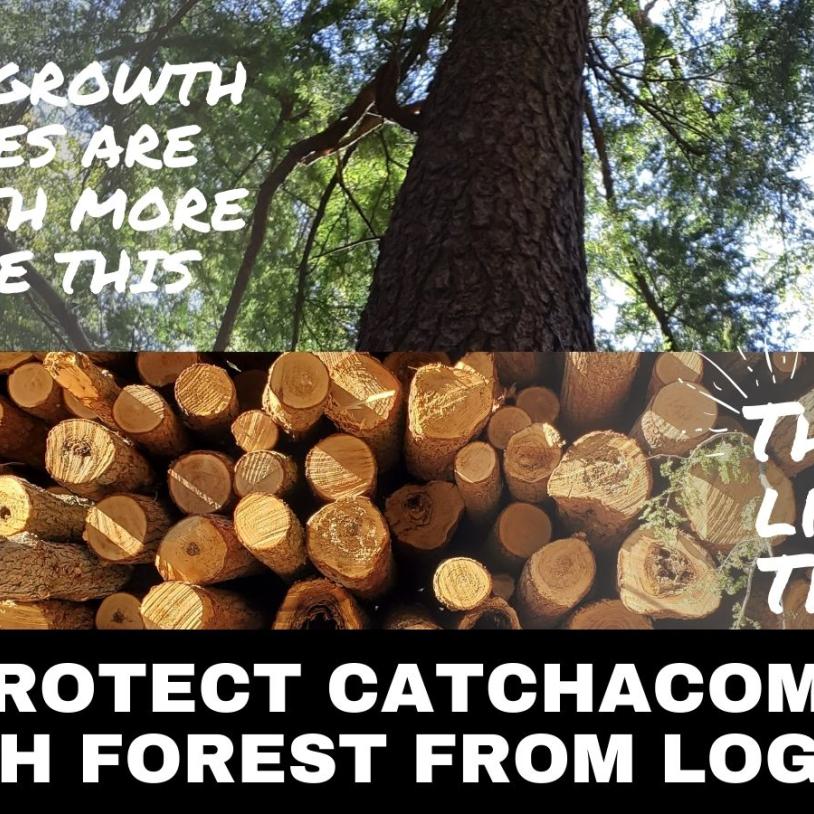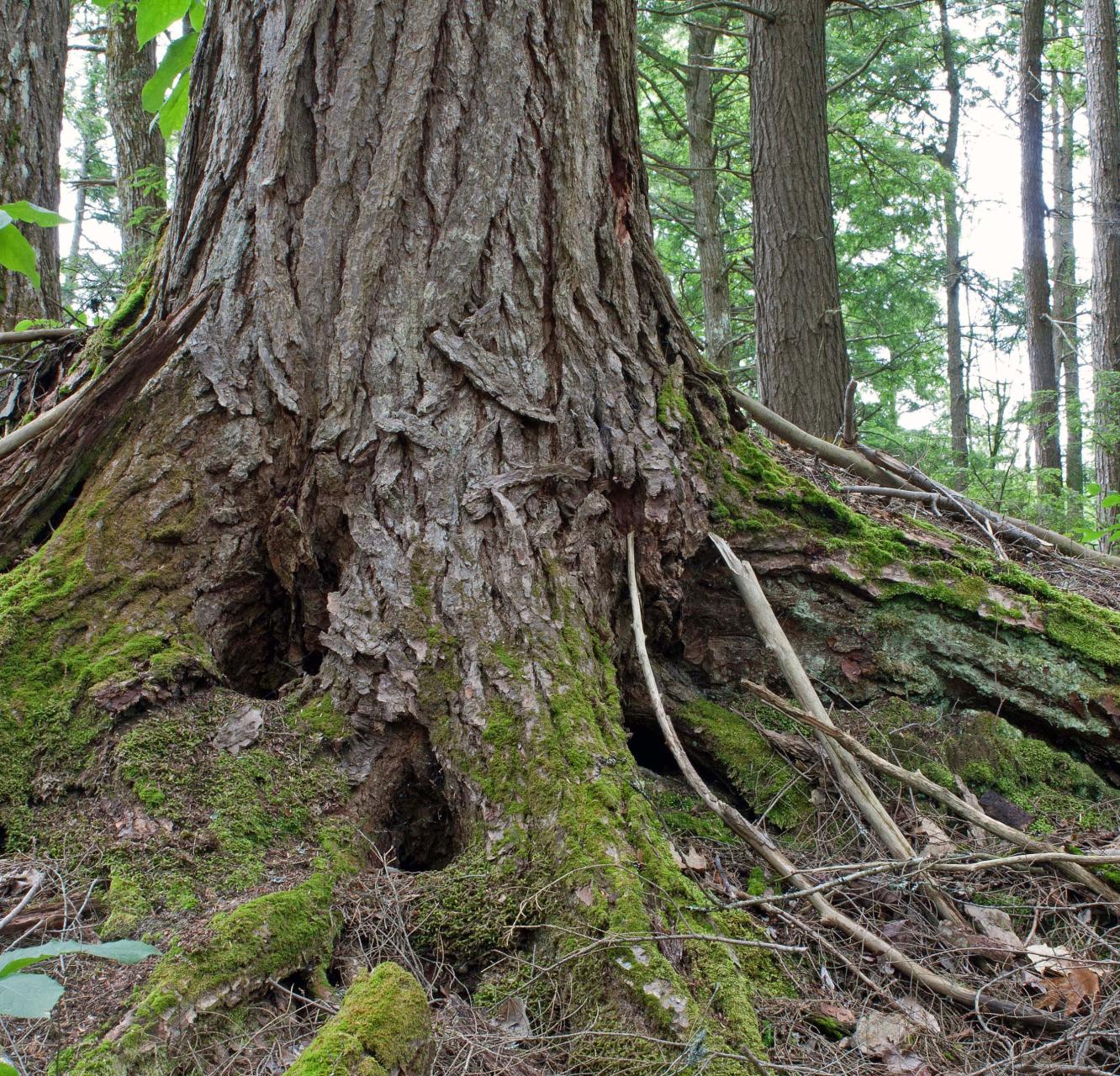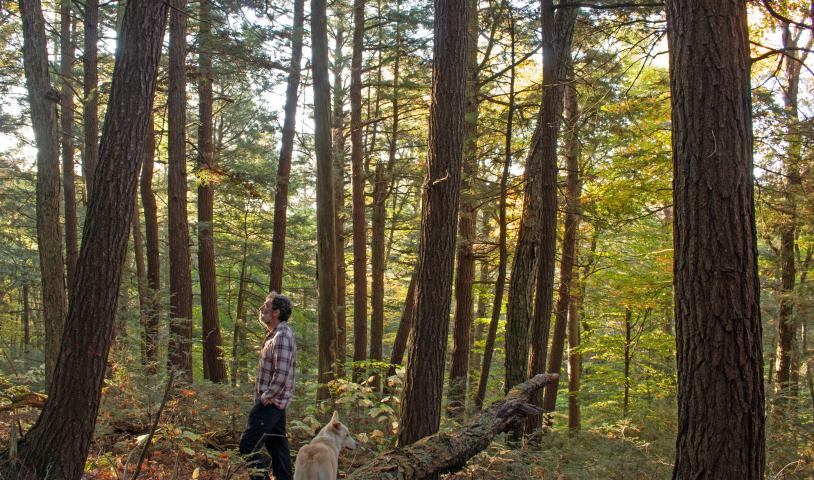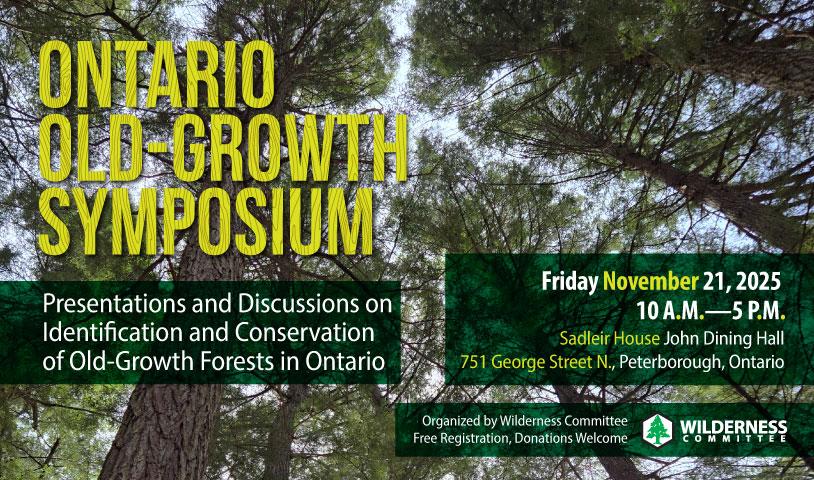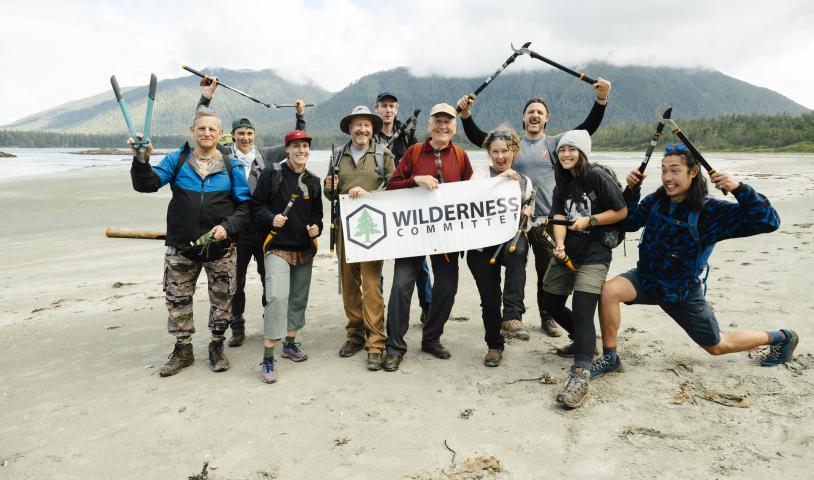What does it take to protect old‑growth? A case study in Catchacoma forest
Wednesday, May 11, 2022North of Catchacoma Lake in Peterborough township, in the traditional territories of Michi Saagig Anishnabeg, lies 660-hectares of crown forest — known as Catchacoma forest. The forest has gained attention from local residents and ecologists for its significant landscape of mature and old-growth hemlock trees — and because it is leased for logging by the province to the Bancroft Minden Forest Company (BMFC).
This past winter the Wilderness Committee partnered with non-profit research group Ancient Forest Exploration and Research (AFER) to lead public hikes to raise awareness and appreciation of the forest, even as trucks moved in to build roads and landings and start logging.
While some logging occurred in 2020 and 2021, we are working with AFER and a citizens stewardship committee to get permanent protection status for Catchacoma — to prevent more logging and prioritize ecological integrity and health as well as low-impact recreational, educational and research opportunities for the forest.
In summer 2020 we hiked Catchacoma forest with seasoned biologists Tim and Kevan who were contracted to do survey work to learn more about Catchacoma’s ecosystem and old-growth qualities.
About hemlock trees:
- Can live up to 600 years
- Are considered “old-growth” starting at 140 years of age
- Are “late-stage” forest succession trees, as they don’t recover quickly after disturbance
- are one of the rarest types of forest in Ontario and are on the decline
- The dense canopy of hemlock provides water cooling to the creeks that feed Catchacoma Lake.
- Are threatened by a non-native insect predator — the hemlock woolly adelgid. The genetic biodiversity of the hemlocks in Catchacoma could provide insight and seed stock for resistance to this disease.
- Hemlock forests are not generally fire-dependent--natural disturbance is primarily from windthrow.
Harvesting over the past year, which cuts 30 to 40 per cent of mature trees. While the forest company and the ministry of forestry insist this is in line with sustainable forest management, even this less intensive form of logging still prioritizes commercial timber values over ecological values. Combined with logging roads and skid trails, it will prevent this forest from reaching its natural mature state and ecological potential as a carbon store and habitat for species dependent on old-growth.
Hiking through the trails we also found several apparent violations of approved logging practices — including trees cut too close to waterways. Many more were marked for cutting beyond what is known as the “water buffer line.”
Catchacoma forest is a habitat for moose, wolves, and a wide diversity of birds, reptiles, amphibians and plants including at-risk species such as cerulean warbler, hognose snake and Blanding’s turtles. Past independent audits of BMFC have found that species-at-risk habitat reporting on the part of the ministry of natural resources has not happened in time to stop logging. If the company doesn’t know what species habitat needs to be protected, they can’t take proper precautions to protect. In addition, the province has recently exempted all forestry operations from adhering to protections and recovery mandates under the endangered species act. In this video, you can hear a wood thrush, a songbird of special concern dependent on dense canopies.
What does it take to get protection?
The provincial process to get new protected areas is complicated and long. Despite having committed to protecting 17 per cent of land by 2020, Ontario’s protected places still sit at under 11 per cent. Another route to protection is through the company’s certification with Canada’s Forest Stewardship Council (FSC) — which has released new requirements that certified forest managers analyze and designate new conservation areas in their management units. We are advocating for Catchacoma forest to be considered in this process, and for a moratorium on upcoming logging while the forest’s conservation status is evaluated.
You can help! We all have a stake in what happens to old-growth forests in Ontario as well as in strengthening public participation in the fate of ecosystems on public lands.
